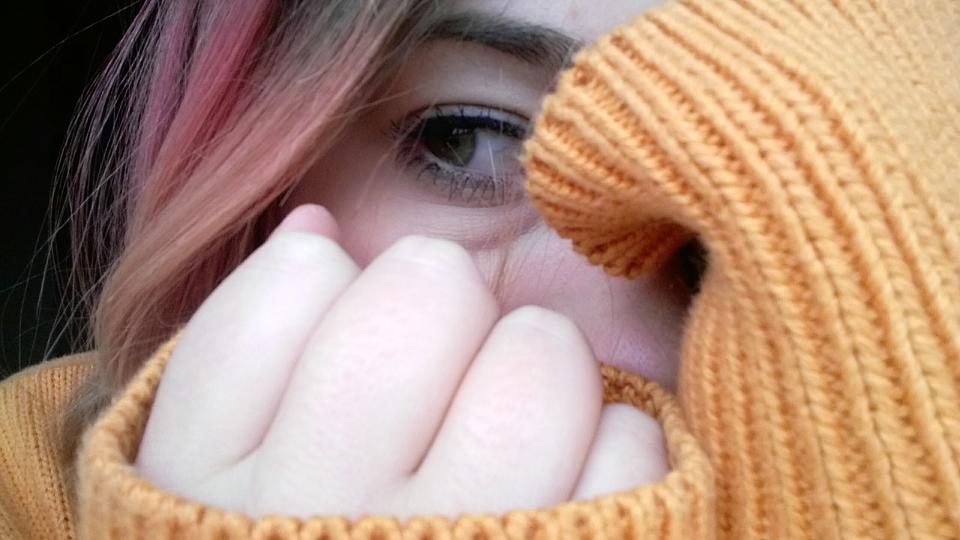Prince Harry details 'terrifying' panic attacks: What to do if you suffer from them
Prince Harry has detailed his experiences of suffering from multiple panic attacks in his new memoir, Spare.
In the summer of 2013, after the Warrior Games, he was “in trouble”, Harry writes, “toggling between bouts of debilitating lethargy and terrifying panic attacks”.
Even though he had years of royal experience in the public eye, speaking at events, he explains that he suddenly found himself “incapable” of fulfilling these duties.
In his tell-all book he writes: “Hours before a speech or public appearance I’d be soaked in sweat. Then, during the event itself, I’d be unable to think, my mind buzzing with fear and fantasies of running away.
Read more: Who is Cressida Bonas? Prince Harry opens up about ex-girlfriend in new book Spare
“The panic often started with putting on a suit first thing in the morning," he continues in the book. "Strange – that was my trigger: The Suit. As I buttoned up my shirt I could feel my blood pressure soaring. As I knotted my tie, I could feel my throat closing. By the time I was pulling on the jacket, lacing the smart shoes, sweat was running down my cheeks and back.”
It isn't the first time Harry has discussed his struggle with panic attacks, previously speaking candidly about his mental health, which includes experiencing severe anxiety and panic attacks while trying to perform is royal duties.
"Every time I put a suit and tie on and having to do the role and sort of like go, let's go," he said in the docu-series The Me You Can't See.
"Before I even left the house I was pouring with sweat, my heart rate was . . . I was in fight or flight mode. Panic attacks, severe anxiety . . . So [age] 28 to probably 32 was a nightmare time in my life, freaking out."

Harry isn't the only celebrity to share their experiences of panic attacks. Back in 2020 Fearne Cotton shared an emotional Instagram post detailing the first panic attack she'd suffered in months during the coronavirus lockdown.
Sharing a picture of herself from her bathroom, the TV presenter confessed that the symptoms of the attack started once she got into bed, and her heart started racing.
She went on to explain she’d woken up feeling “bruised and fuzzy”.
In the accompanying caption, the TV star elaborated on what had happened: “I don't often feel comfortable posting stuff like this on here as these moments are best told in carefully written books or spoken aloud in context but hey, we're in weird times so all rules are out of the window.
Read more: Those with stress, anxiety and depression will have access to NHS ‘employment advisor’
A post shared by Fearne (@fearnecotton) on Apr 8, 2020 at 12:07am PDT
“Last night I had my first panic attack in months,” she continued. “It had been so long I had almost forgotten they can sneak up out of the blue, or pink, considering last night's moon.”
Fearne continued by explaining that her heightened state lasted for three hours before she managed to drift off to sleep, only to be woken by her son, Rex.
The radio presenter said her reason for sharing wasn’t to garner sympathy, but to help others who suffer from panic attacks know that they’re not on their own.
“I’m putting it out there for those who experience the same yet feel alone,” she wrote.
“I often feel I'm the only one who can’t do normal stuff like sleep well or stay calm in chaos so for all those in the same boat... we stand together. It'll pass, calm will resurface, it's just a road bump today, so for now we can feel tired and know that’s OK. Big love to you all whatever you’re going through today. Love and Peace.”
Read more: Talking mental health: What to say when someone's struggling, according to experts
What is a panic attack?
“Panic attacks are an exaggeration of the body’s usual reaction to danger, stress or excitement,” Stephen Buckley, head of information at the mental health charity Mind previously told Yahoo UK. “They can be triggered by stressful places, situations or events, but some people may experience a panic attack without any clear trigger.”
Buckley says a panic attack can be differentiated from other anxiety symptoms by its intensity and duration of symptoms.
“Panic attacks can be frightening, especially if you’ve never experienced one before and don’t know what’s happening.
“They’re associated with physical symptoms such as rapid breathing, nausea, sweating and sometimes chest pains which can feel difficult to control, but there are ways to cope with them.”

What to do if you are suffering from panic attacks
Pause and observe your thoughts
“If possible, you should stay where you are during a panic attack,” Dr Donna Grant, consultant psychiatrist at Priory’s Chelmsford Hospital advises. “Then pause for moment, observe your thoughts and tell yourself that your mind is reacting to these thoughts and anxiety.
“These feelings are normal - it’s just the body's alarm system doing its job when it doesn't need to. It's important to see the situation through. Stick with the panic; it will pass.”
Learn to control your breathing
People often hyperventilate during a panic attack. This means taking deeper breaths than normal which results in you feeling short of breath, causing a feeling of dizziness, disorientation and chest pains.
“By learning to slow your breathing down, you can help prevent the uncomfortable physical symptoms and stop the panic cycle,” Dr Grant says.
She advises trying to get a slower and more stable breathing rhythm by breathing in for three seconds, holding your breath for two seconds, and then breathing out for three seconds.
“As you breathe, ensure that your stomach expands as you take each breath as this helps to ensure the breathing isn't shallow, which can add to the problem,” she adds.
Buckley says it can also be helpful to focus on your senses. “Noting what you can see, hear, smell, taste and feel can help to bring you back from feelings of panic,” he explains.
Learn to use positive coping statements
When you are feeling anxious and panicky Dr Grant says it can be helpful to have ‘coping statements’, which can be used to remind you that panic is not dangerous and isn’t harmful.
She suggests statements could be:
- Panic is simply high levels of anxiety
- By remembering these symptoms are nothing more than anxiety, I can prevent further symptoms occurring
- My anxiety and panic will pass naturally given time. It doesn’t last forever
“Reminding yourself of these facts can help to prevent further panic cycles happening,” Dr Grant adds.
Tell someone
“If you live with others, let them know what they can do to support you next time you experience a panic attack, whether it's helping you sit down, getting you a glass of water, or helping you to control your breathing,” says Buckley.
“If you live alone, try to have a plan in place of what you will do until it passes. For example, plan a safe space in your home that you can go to while you're self-isolating, or an outside space such as a garden, if you have one.
“You could also ask a family member or friend that you trust to be your on-call person and they can support your remotely via a video or phone call and help you to work on your breathing.”

Shift your focus
Many things can go through your mind during a panic attack, often very negative thoughts. “Rather than focusing on these, try to concentrate on something else such as looking at a picture or something that interests or comforts you,” Dr Grant suggests.
Alternatively, you could try creative visualisation. “To do this, think of a place or situation that makes you feel relaxed or comfortable. Once you have the image in your mind, focus your attention on it and this should distract you from the panic which should then help ease your symptoms,” she explains.
Challenge unhelpful thoughts
According to Dr Grant the way we think about things has an impact on panic. “Many of these thoughts are out of our control and can be negative and unhelpful. It is therefore important to remember that they are just thoughts and are not necessarily facts,” she says.
Even though we may believe a lot of the unhelpful thoughts during a panic attack, Dr Grant says these thoughts should be challenged as they are often based on incorrect assumptions. For example, misinterpreting the physical changes in the body during panic as ‘I'm having a heart attack’.
“To challenge and answer this negative thought, you would ask: what could you have said to yourself that would have helped?” she continues
“Becoming aware of the common patterns that unhelpful thoughts follow can help you recognise that you have them.”
Dr Grant suggests that keeping a diary of what happens each time you panic can help you to spot patterns in what triggers these experiences for you, so that you can think about how to deal with these situations in the future.
How to help someone who is suffering from a panic attack
It can be alarming for a friend or family member to see someone experiencing a panic attack.
According to Life coach and resilience specialist Shelley Crawford you can help someone in a panic attack by being calm and gentle, using a soothing voice and trying not to come across as patronising.
“It’s important to not say ‘just calm down’,” she says. “Instead try to get the person to a quiet place away from others and encourage them to breathe with you.
“If you are not physically in their presence (i.e. online) you can still do this exercise.
“For instance, you might say ‘I can see you’re feeling really panicked right now. Can you try to take a breath? We can do it together. We could try to breathe in for a few counts, hold the breath for a few counts and then breathe out slowly.
“‘This can help you with the feelings you’re feeling right now. Can you try to focus just on drawing that breath in slowly?
“‘Let’s give it a go – try to breathe in with me…breathing in 2,3,4. Okay great…now hold it for a couple of counts..good..now breathe out a little slower..breathing out for 2,3,4,5. Do you want to try that again?’”
For support, tips and advice about mental wellbeing visit Mind at www.mind.org.uk



